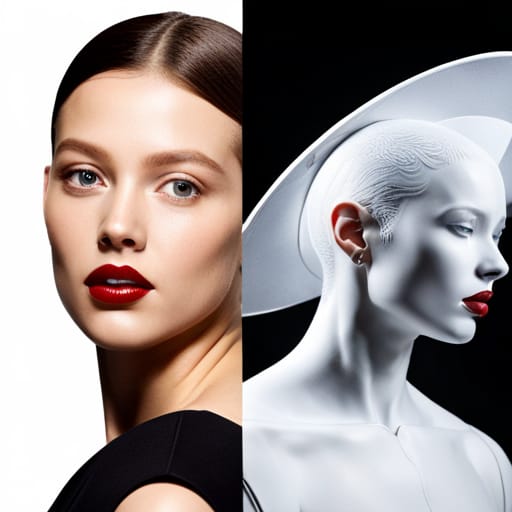I’m often asked by customers and traditional artists what I think about the impact of AI. Here are my thoughts on how it might impact the fashion business, including models, photographers, event planners, agencies, and related businesses.
In my opinion, the biggest impact AI could have on the fashion industry would be the replacement of human fashion models with AI-generated models, and traditional photo shoots with computer-generated imagery.
Prediction: it’s possible that one or more of the following changes could come about:
- Fashion models will be generated by AI: advancements in AI technology will make it possible to create hyper-realistic virtual fashion models. These AI-generated models might then be used for advertising, promotional materials, and even fashion shows – eliminating the need for human models. As an example, the models in the featured image for this article were generated by an AI!
- Elimination of traditional photo shoots: AI-powered image generation, editing, and manipulation tools can create high-quality images featuring AI-generated fashion models in various poses, ensembles, and environments – potentially rendering traditional photo shoots with human models obsolete.
- Virtual fashion shows: AI, especially when combined with augmented reality (AR) or virtual reality (VR), could make fully-virtual fashion shows a reality. These events would be able to showcase a designer’s clothing and accessories without needing physical models or even a venue – saving time, expense, and resources – and, potentially, reaching a much wider audience.
- Customisable clothing and customer avatars: an AI could design custom clothing along with a custom avatar to represent the customer. These would both be adapted to a customer’s individual preferences and body type. Consumers could then try on the custom clothing or accessories virtually, using their personalised digital avatars – eliminating the need for clothing stores. Variations in the design and colours could be made by the customer virtually while online. The customer could then place their order, and their custom clothing would then be fabricated and shipped to them.
- Targeted promotion and advertising: AI has the ability to analyse customer preferences, and then to create personalised promotional materials based on this analysis. This would allow fashion brands to target specific consumer segments with AI-generated fashion models and customised advertising copy that would most appeal to them. Because AI-generated fashion models, imagery, and sales text can be easily tailored to individual customers or demographic groups, this would eliminate the reliance on human fashion models for advertisements and promotions
If one or more of these predictions comes to fruition, the demand for human fashion models and traditional photo shoots could decline significantly. As well as a fundamental shift in the modelling industry, this might lead to job losses across the entire sector – including related businesses.
Ethical considerations, public perception, and the need for authentic human connections might limit the extent to which AI-generated fashion models can replace human models entirely. That said, we should never dismiss the profit motive – historically, this has a habit of overriding ethical and other considerations. On the plus side, the modelling industry is quite diverse, and human fashion models might still find opportunities in areas where AI-generated models are less effective.
We’ll have to wait and see…




